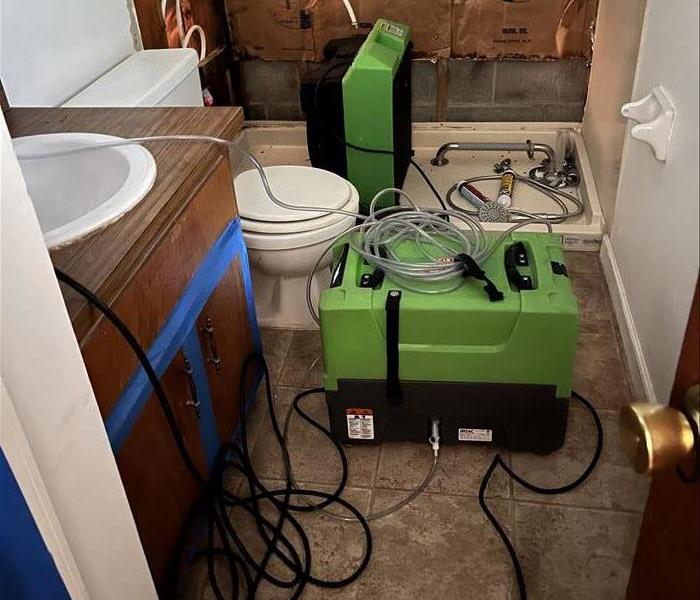Dealing with Water Damage from Ruptured Pipes: A Guide by SERVPRO®
1/4/2024 (Permalink)
Water damage from ruptured pipes can be a homeowner's nightmare, leading to property damage, mold growth, and significant repair costs. Handling this type of water damage requires swift and effective action to mitigate the extent of the damage. In this blog post, SERVPRO® offers a guide on how to handle water damage caused by ruptured pipes in your home.
Step 1: Turn Off the Water Supply
The first step when you discover a ruptured pipe is to shut off the main water supply to your home. This action will stop the flow of water into your property, preventing further damage.
Step 2: Turn Off Electricity
If the water damage has affected electrical outlets, fixtures, or appliances, it's essential to turn off the electricity to the affected area to avoid electrical hazards. If you're unsure how to do this safely, contact an electrician for assistance.
Step 3: Assess the Extent of Damage
Carefully assess the extent of the water damage. Check for visible signs of damage such as soaked carpets, wet drywall, and standing water. Identify the source of the rupture and whether it's a hot or cold water pipe.
Step 4: Remove Excess Water
Using a wet-dry vacuum or mop, begin removing excess water from the affected area. The faster you can remove standing water, the better chance you have of preventing further damage and mold growth.
Step 5: Ventilation and Dehumidification
Open windows and doors to improve ventilation and help dry the affected area. You can also use dehumidifiers to reduce excess moisture in the air.
Step 6: Salvage Valuables and Contents
If there are valuables or personal belongings in the affected area, remove them to a dry, safe location to prevent further damage.
Step 7: Contact SERVPRO®
Ruptured pipe water damage can quickly escalate into a more significant issue, including mold growth and structural damage. Contact SERVPRO® for professional water damage restoration services. Our experienced team has the expertise and equipment to handle the situation effectively.
Step 8: Document the Damage
Before starting any restoration work, document the damage by taking photos and making notes. This documentation may be helpful for insurance claims.
Step 9: Begin Drying and Restoration
SERVPRO® technicians will assess the extent of the damage and develop a customized plan for drying and restoration. This process includes removing damaged materials, drying affected areas, and addressing any mold or microbial growth.
Step 10: Prevent Future Ruptures
After the restoration is complete, it's essential to take steps to prevent future pipe ruptures. This may involve inspecting and maintaining your plumbing system, insulating pipes in cold weather, and addressing any known issues promptly.
Why Trust SERVPRO®:
SERVPRO® specializes in water damage restoration, including damage caused by ruptured pipes. Our team is available 24/7 to respond quickly to water damage emergencies. We use advanced equipment and techniques to ensure your property is restored to its pre-damage condition, making it "Like it never even happened."
Don't let water damage from ruptured pipes overwhelm you. Follow these steps, and remember that SERVPRO® is here to help you through the restoration process, ensuring your home is returned to its optimal condition.




 24/7 Emergency Service
24/7 Emergency Service
